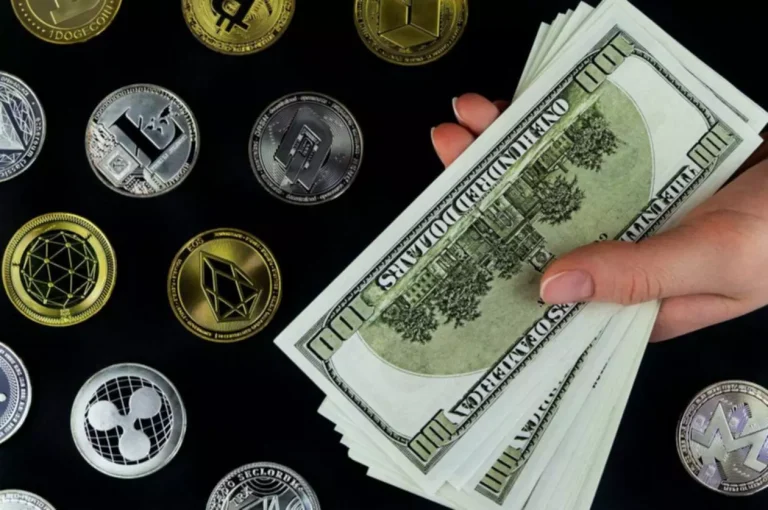Content
If you have office staff who handle payments, make sure Smart contract they understand how to accept stablecoins and use the digital wallet. Provide simple training to ensure a smooth process for both your team and your customers. They can enable companies to pay their employees in a currency that doesn’t fluctuate wildly, ensuring that wages remain stable. The U.S. Federal Reserve and Treasury Department plan to give funds to the Guaidó administration, which will utilize the funds to mint USDC. After which, the USDC will be released to a crypto exchange where it will be distributed to Venezuelan medical workers and locals through digital wallets.
The Two Most Common Stablecoins
Companies like Ripple have partnered with banks to use XRP XRP as a bridge currency for cross-border payments, demonstrating the growing adoption of crypto-based solutions in international finance. Acquire stablecoins through cryptocurrency exchanges, both centralized and decentralized. Centralized exchanges allow purchases with fiat currency or trades for other cryptocurrencies, often stablecoin payment for business requiring identity verification for regulatory compliance. Decentralized exchanges (DEXs) enable direct peer-to-peer trading without intermediaries. Scalability remains a challenge, particularly for stablecoins built on high-traffic networks like Ethereum Ethereum .
Crypto-collateralized Stablecoins
Digix Gold is another gold-backed stablecoin, where each token represents 1 gram of gold. These stablecoins offer exposure https://www.xcritical.com/ to commodity markets within the cryptocurrency ecosystem. Tether, one of the earliest and most widely used stablecoins, claims to be backed by a combination of U.S. dollars and other assets.

As we dive further into the ecosystem, we could see several different categories of stablecoins.
US-based 1Money, the developer of a Layer 1 protocol network tailored for stablecoin payments, has secured over $20m in seed funding. There’s a growing number of tech-savvy customers who prefer using digital currencies. By accepting stablecoins, you can appeal to these customers and differentiate your business from competitors.
The total value of stablecoin assets surged by c.495% from October 2020 to October 2021 (according to The Block), highlighting exponential growth in demand for them over a short period of time. Fiat-collateralized stablecoins are the most common type and the simplest structure of stablecoins. They are backed by fiat currency (a government-issued currency), like USD and EUR, as collateral to supply a certain amount of digital coins. As long as the economy of the country’s fiat currency remains stable, so will the value of the stablecoin. Stablecoins are a type of cryptocurrency tied to the value of a traditional fiat currency such as the dollar.
This article will explore how stablecoins work, their various types and their potential impact on the financial system. We’ll also discuss the practical aspects of using stablecoins for payments, including benefits, risks and real-world applications. Unlike traditional banking methods that can take days to process cross-border transactions, stablecoin payments operate around the clock, facilitating almost instantaneous transaction settlements. As digital currencies designed to maintain a stable value, they are ideal for e-commerce transactions, providing both merchants and consumers with reliable payment options.
The US Treasury continues to assess the risk of money laundering and terrorist financing via National Risk Assessments while the EU has proposed laws to ensure the traceability of crypto transactions. Consistent regulations across the board and swift implementation of rules set by the Financial Action Task Force (FATF) to prevent illicit activity are also vital to remediate these issues. In 2020, Bank Frick in Liechtenstein tested SWIFT for Circle’s stablecoin, mainly to enable faster processing of USD payments. In March 2022, ANZ delivered A$DC (AUD stablecoin) to a private wealth management firm for digital assets via digital asset investment platform Zerocap, further highlighting the growing use of stablecoins.
Blockchain technology is the secret sauce that automates conversions and handles compliance in foreign exchange (FX) payments, making stablecoins even more useful. The decentralized nature of blockchain allows stablecoin transactions to occur without intermediaries, enhancing efficiency and reducing potential delays or errors. More than 25% of businesses have started accepting stablecoins for payments, showcasing their growing trust and reliance on this new technology. Globally, businesses are increasingly adopting stablecoins to streamline payment processes and boost transaction efficiency. Despite these risks, the over-collateralization model helps maintain the stablecoin’s peg, providing a decentralized alternative to fiat-backed options.
And by 2027, according to Deloitte, 85% of surveyed merchants expect that stablecoin payments will be ubiquitous among suppliers in their industry. Stablecoin payments make it easier to reach global customers and navigate the complexities of international payments with a single, borderless payment option that’s accessible to buyers around the world. Following Stripe’s launch of stablecoin payments in October 2024, they saw pay-ins from over 70 countries in just 24 hours. Stablecoins reduce the role of intermediaries in the current financial system and support direct transactions between merchants and consumers, reducing intermediary costs. Because stablecoins are cryptographically secure, users can settle transactions almost instantaneously without double-spending or other problematic settlement facilitation. Issuers mint stablecoins onto various blockchains to leverage the unique features that different blockchains offer.
The following subsections will delve into each category, exploring their specific characteristics and practical applications in the financial world.
- Though it requires greater reserves, it provides an additional layer of security, helping the stablecoin to maintain its peg even in times of market stress and instability.
- In the event that the pegged crypto has an extreme drop in value, the stablecoin can maintain value.
- By accepting stablecoins, you can appeal to these customers and differentiate your business from competitors.
- But the incoming administration might create a set of rules that can act as a foundation for a burgeoning crypto industry to build on, and stablecoins could play an important role in that new realm.
- Since then, MakerDAO has implemented overcollateralization and uses multiple cryptocurrencies as reserves.
Consider factors like fees, liquidity and supported payment methods when choosing an exchange. Research the reputation and security measures of the exchange before making significant purchases. While stablecoins offer numerous benefits, they also present significant risks and challenges. These include regulatory uncertainties, centralization concerns and technical vulnerabilities. Understanding these potential pitfalls is crucial for users, investors and policymakers as stablecoins continue to integrate into the global financial system. Stablecoins enable seamless cross-border transactions, simplifying global commerce without complex currency exchanges.

These stablecoins function as digital representations of ownership rights to a specific quantity of the underlying commodity. For example, one token might equate to one ounce of gold or a fraction of a barrel of oil. The actual commodities are stored in secure, audited facilities, while the blockchain records ownership and facilitates transfers. This mechanism allows users to gain exposure to commodity markets without the complexities of physical storage or traditional commodity trading platforms.
Adapting now to new global payroll trends in 2025 will keep firms accurate and ahead of the competition. Enhanced security measures are also being prioritized to protect stablecoins from cyber threats and fraud. As awareness and acceptance of stablecoins grow, their integration into mainstream e-commerce platforms is expected to increase significantly. Traditional bank transfers can take days to settle, especially for cross-border transactions. Notably, in Singapore, the value of stablecoins has reached $1 billion, underscoring their rising prominence.
Stablecoins are blockchain-based tokens tied to a stable asset, typically the US dollar, to maintain a stable value. Scheduled to launch in the second quarter of the year, 1Money is claimed to enable instant transaction confirmations, with users able to send and receive stablecoins. Dtcpay had recently announced that it will be making a strategic shift to exclusively support stablecoins for all its payment services starting in January 2025. Stablecoins can simplify accounting and reporting tasks, as every transaction is recorded on the blockchain. This CPMI report highlights a range of considerations and challenges regarding the use of stablecoin arrangements in cross-border payments. The myriad use cases of stablecoins could also be translated into the banking sector and lending, benefiting a large network of users.

